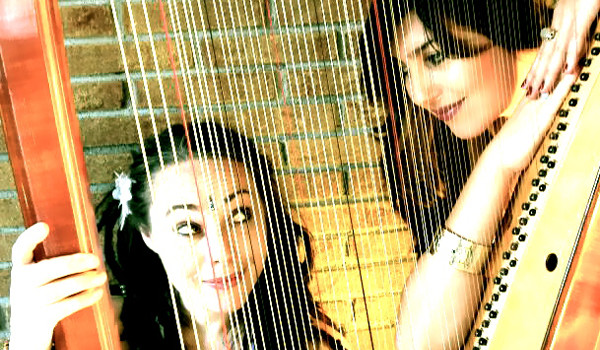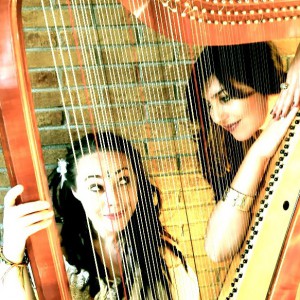Koffieconcert – So el Ençina

So el Ençina (harpiste Sarah Louise Ridy en mezzo-sopraan Luciana Cueto) met het programma “Ai flores”
Een reis door oude Spaanse romances, villancicos en ballades over liefde en verdriet …
Gewiegd door de prachtige klanken van de harp, die mooi en puur met de stem samen klinkt, presenteert So el Ençina een programma dat geraffineerde poëzie combineert met de sublieme schoonheid van de polyfonie en de subtiele mozaïek van harmonische kleuren van muziek van het Iberisch schiereiland uit de middeleeuwen en renaissance.
Ai flores- So el Ençina
Cradled by the beautiful sounds of the harp, which binds so purely to the voice, So el Ençina presents a program which combines refined poetry, the sublime beauty of polyphony and the subtle mosaic of harmonic colours characteristic of the Medieval and Renaissancemusic of the Iberian Peninsula.
Unrequited love and sorrow, using nature or the figure of the mother as a interlocutor, were very common throughout this musical period in the peninsula. Dark and melancholy lines are commonly used to reinforce those feelings. This program proposes a journey along these themes, in a continuous upwards line from the Middle Ages on the coast between Galicia and Portugal (here shown as Mar de Vigo) until the end of the Spanish Renaissance.
We will start our trip with some of the most beautiful Cantigas de Amigo, a medieval lyrical composition that was developed in the northwestern part of the peninsula (from the Bay of Biscay to the Duero River). These works are rooted in the traditional poetry of this area, in the Galician-Portuguese language. The oldest preserved evidence of this is from the late twelfth century and reached its peak in the fourteenth century.
Using a simple and sweet language,the texts of these love songs are sung from the perspective of a woman who expresses regret at the absence of her beloved one (“amigo”), taking her mother, sister or nature (as the Sea of Vigo or the flowers) as confidants.
While little or nothing is known about the authors of the Cantigas de Amigo, and most are of anonymous origin, one musical scroll has survived, called “Vindel” that contains works by the Galician troubadour Martin Codax, possibly from Vigo, who during the mid-thirteenth and early fourteenth centuries. Of his authorship are some of the songs that are presented in this program.
The Cancionero Musical de Palacio is a manuscript containing Castilian Renaissance music, works collected over a period of about forty years, from the last third of the fifteenth century to the early sixteenth, during the reign of the Catholic Monarchs and the beginning of the reign of his daughter Juana of Castile (known as Joanna the Mad). This manuscript contains 458 pieces, most of them in the Castilian language and it is one of the great treasures of Spanish music.
This songbook brings together varied compositions, from the simple popular style to more elaborate courtly works. The most important musical form is the villancico, although other genres such as romances and canciones are also represented. Most works are for one voice with instrumental accompaniment, or polyphonic works of two, three or four voices. The CMP contains works by the leading composers ofthat time, such as Juan del Encina, Pedro Escobar, Francisco de la Torre, Francisco de Peñalosa, Juan de Anchieta, Juan de Urrede, and Juan Carnago among others.
One of the main instruments of the Renaissance period in Spain is the famous vihuela, a stringed instrument that was extremely popular in the Iberian Peninsula during the sixteenth century. A lot of music has been composed for this instrument, although most of the surviving pieces are adaptations of works that were already very well known at the time, for example Gombert’s Dezilde al Caballero arranged for vihuela by Diego Pisador, or one of the most famous songs in Europe during the sixteenth century, Narváez’s intabulation of Josquin’s “Mille regretz”, called “Song of the emperor”. The title reflects Charles V’s fondness for this song.The famous vihuela books of the sixteenth century contain works by the masters Luis Milán, Luis de Narvaez, Alonso Mudarra, Alonso Enriquez de Valderrabano, Diego Pisador, Miguel de Fuenllana y Esteban Daza.
The harp was one of the most prestigious and dominant instruments throughout the renaissance period for its broad register, its ability to reproduce polyphony, and for the sublime way that it blends with and accompanies the human voice.
